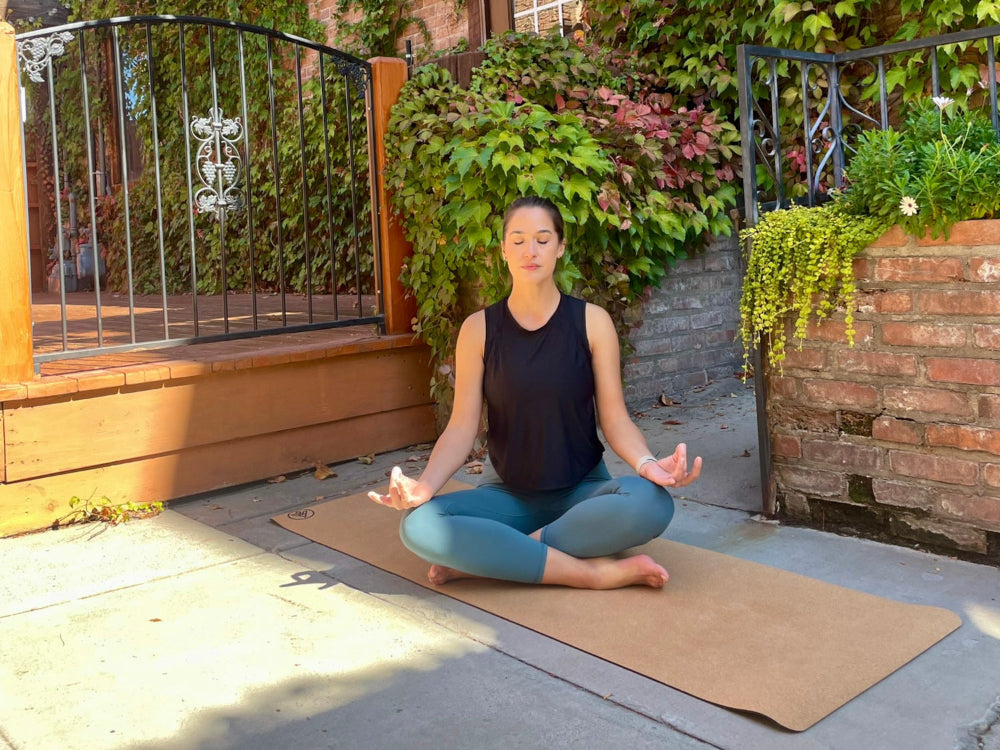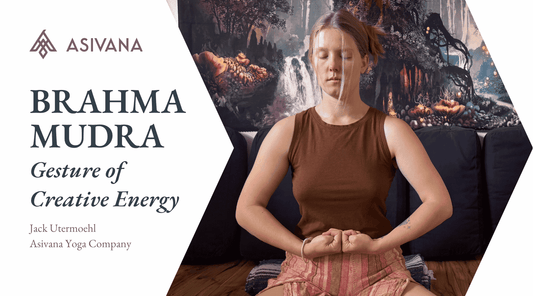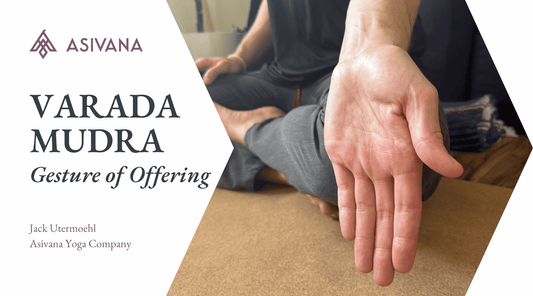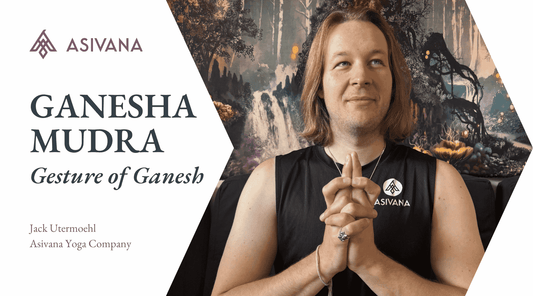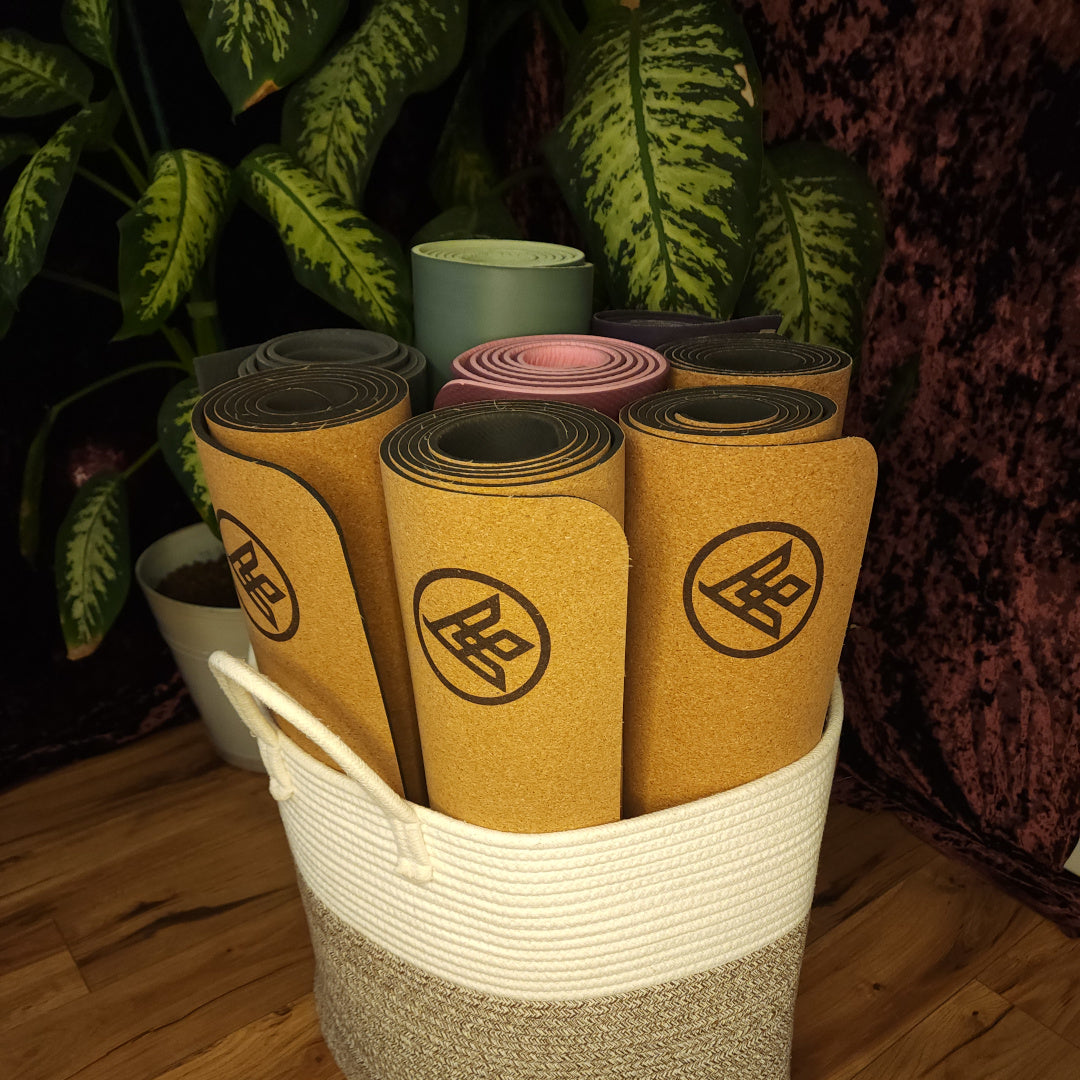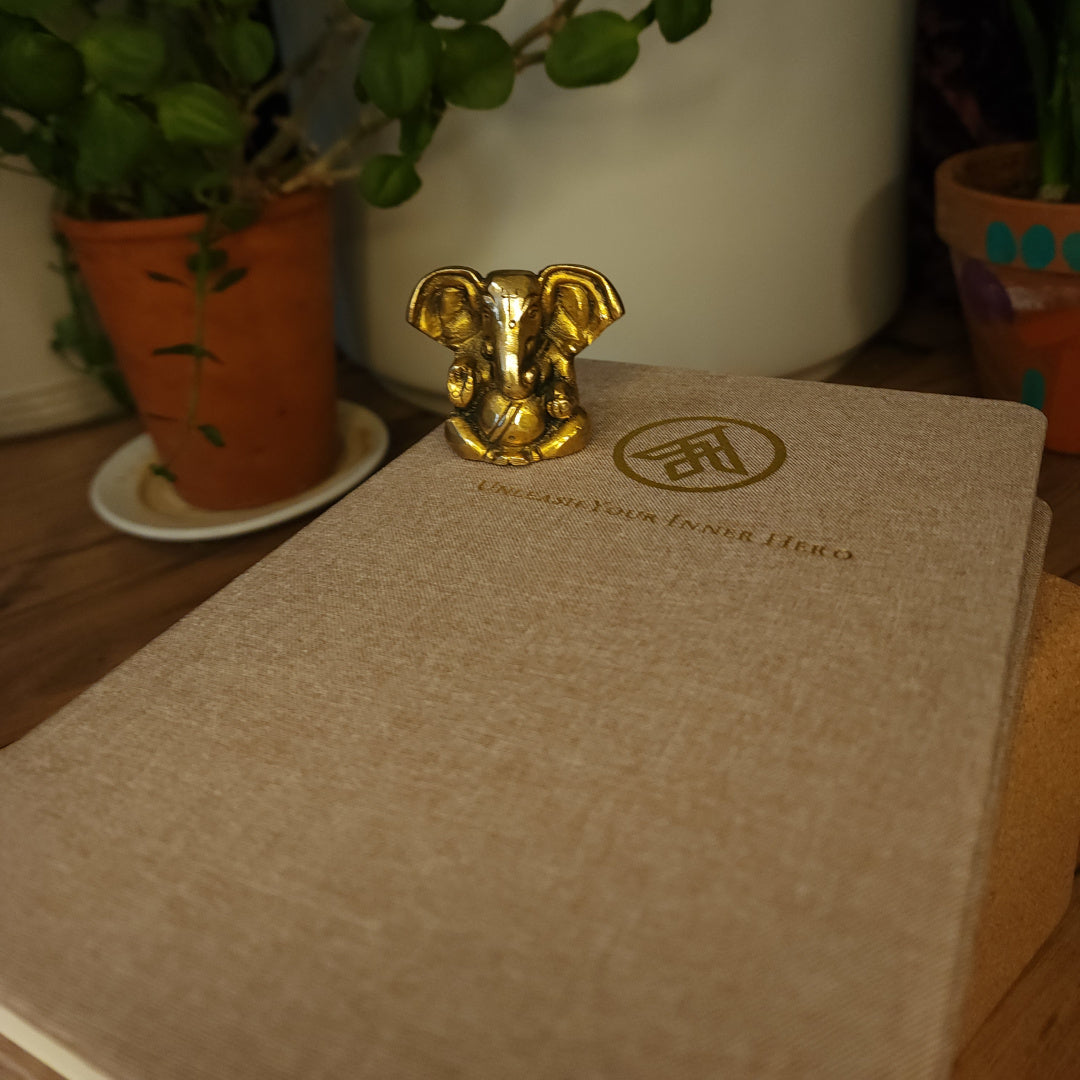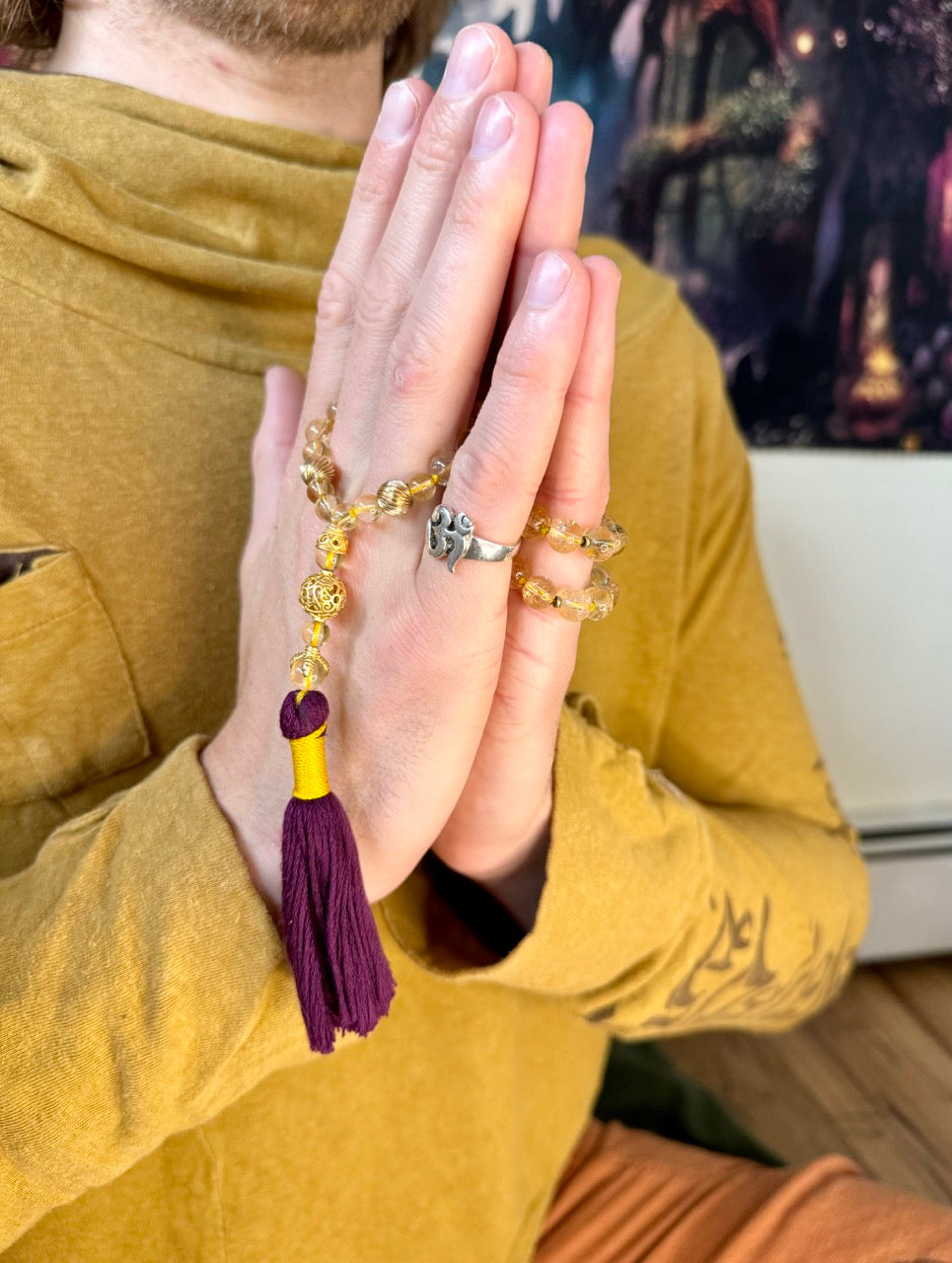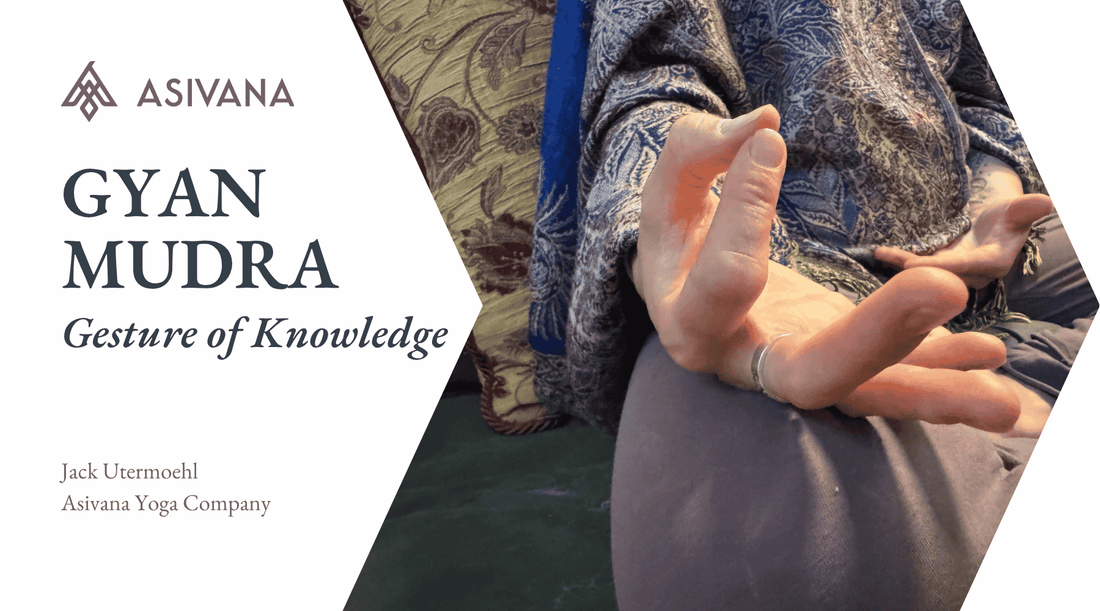
Gyan Mudra - Gesture of Knowledge
Jack UtermoehlShare
Gyan Mudra (Gesture of Knowledge)
Gyan Mudra, also known as Jnana Mudra, is one of the most iconic hand gestures in yogic and meditative practice. It symbolizes the essence of knowledge: not just intellectual learning, but the inner knowing that arises from deep contemplation.
There is no fundamental difference between Gyan and Jnana Mudra; the distinction lies only in transliteration. Both reflect the same gesture, same energy, and same inner purpose.
The Sanskrit word gyān (ज्ञान) means “knowledge,” and in the context of this mudra, it points toward vidyā: spiritual knowledge that leads to liberation. This gesture appears in countless depictions of sages, yogis, and deities in meditative stillness, reminding us that true knowledge is revealed through silence, clarity, and deep connection to source.
Sanskrit Name: Gyan Mudrā – ज्ञान मुद्रा
English Translation: Gesture of Knowledge
Phonetic Spelling: gyä-nuh moo-drah
In Gyan Mudra, the tip of the index finger touches the tip of the thumb, forming a circle. The remaining three fingers extend naturally, without force.
The thumb represents universal consciousness (brahman), while the index finger represents individual consciousness (ātman). Their union signifies the dissolution of ego and the realization of unity—the ultimate aim of yoga.

Instructions to Perform Gyan Mudra
Sit in a comfortable meditative posture such as sukhasana (easy pose), padmasana (lotus pose), or on a chair with both feet grounded. Let your spine rise naturally and allow the shoulders to soften.
Hand Position: Join the tips of your thumb and index finger. Keep the other three fingers extended but relaxed.
Placement: Rest the backs of your hands on your knees or thighs, palms facing upward to symbolize receptivity and openness to wisdom.
Breathing Technique: Inhale slowly, imagining clarity entering the mind. Exhale, releasing tension, distraction, and mental fog.
Duration: Hold the mudra for 5–20 minutes during meditation, breathwork, or during inner reflection. It is safe to use daily.
Benefits of Gyan Mudra
Gyan Mudra refines perception and strengthens the mind’s connection to the higher self. While gentle in form, it is potent in its capacity to harmonize the nervous system and attune awareness.
Physical Benefits: Supports brain function, enhances memory, calms the nerves, and deepens the breath naturally.
Mental Benefits: Improves concentration, decision-making, and creative problem-solving by anchoring the mind in steadiness.
Emotional Benefits: Eases anxiety and mental restlessness, bringing emotional clarity and self-confidence.
Spiritual Benefits: Awakens insight, enhances meditative absorption (dhyana), and dissolves the illusion of separation between self and source.
Elevate Your Mudra Practice
Capture your insights and deepen your connection with our Yoga Journal.
Symbolism and Meaning of Gyan Mudra
The gesture itself is rich in symbolism. The circular connection of the thumb and index finger represents completeness, a return to wholeness. The thumb (symbol of the supreme Self) remains steady, while the index finger (symbol of the individual ego) bows toward it in surrender.
This is yoga in action: the merging of finite with infinite, the remembrance of what we are beneath all conditioning.
The three extended fingers remind us of the play of the three gunas (sattva, rajas, and tamas) which color our experience of the world. Gyan Mudra does not suppress them, but allows the practitioner to witness and transcend them through mindful awareness.
When to Practice Gyan Mudra
Gyan Mudra can be practiced at any time you seek inner stillness, clarity, or insight. It is most effective when paired with intentional breath and silence.
- During meditation to sharpen focus and awareness
- While practicing pranayama to regulate the breath and mind
- At the start of your day to anchor into presence and purpose
- Before or during study, writing, or teaching
It is traditionally practiced in the early morning hours (brahma muhurta), but can be used anytime you feel called inward.
Contraindications for Gyan Mudra
Gyan Mudra is gentle and accessible, though you may wish to adjust for physical comfort:
- Support the wrists or arms on cushions if holding the position causes strain
- If the mind feels overly active, pair the mudra with calming pranayama such as nadi shodhana
- Be soft in the fingers, no effort is needed to force the gesture
Additional Insights on Gyan Mudra
Affirmations: “I dwell in the wisdom of the Self.” / “Clarity is my natural state.”
Visualization: Envision a steady, glowing indigo light at the center of your forehead (ajna chakra). With each breath, allow this light to expand, clearing mental haze and guiding your awareness to a place of inner knowing.
Associated Chakras: Ajna (Third Eye) for intuition, Sahasrara (Crown) for spiritual connection and insight.
Paired Asanas: Sukhasana, Padmasana, Vajrasana, or any stable seated pose conducive to meditation.
Related Pranayama: Nadi Shodhana (alternate nostril breathing), Bhramari (bee breath), or simple deep diaphragmatic breathing.
Meditation Techniques: Silent witnessing, mantra repetition (e.g., Om), breath-focused awareness, or self-inquiry (vichara).
Variations and Modifications
Alternative Hand Positions: Palms facing down (Chin Mudra) offers a more grounding, introspective effect. Palms facing up (Gyan Mudra) invites upward-moving prana and connection to the higher mind.
Adaptations for Beginners: Begin with short holds (2–5 minutes). Rest your hands on cushions or bolsters to avoid fatigue or tension. Let the gesture be soft, not forced.
—— 🕉 ——

Personal Insights
In the stillness of Gyan Mudra, something unspoken begins to rise. It’s not a thought or idea, it’s a kind of remembering. A soft, inner light that reminds me I’m not separate from the source of wisdom I seek.
While a natural impulse to form Gyan Mudra is common when we sit in meditation, I once thought this impulse was a result of my conditioning to what meditation looks like. And this may have some truth to it.
We've seen Gyan Mudra used in depictions of buddha and Buddhists, yogis and Hindu deities, and we've even seen it used in modern depictions of new age meditation practices.
But this common symbol of meditation isn't a coincidence, it's genuine, this is the mudra we hold for the deepest insight into our inquiry towards self-realization. For inner peace, reducing stress, for overcoming depression, and for manifesting our desires, Gyan Mudra helps use cut clearly to the source, the core, of the issue.
This is why we practice Gyan Mudra.


